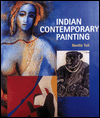

|
A book spanning three decades of Sudhir Patwardhan's career. The Complicit Observer by Ranjit Hoskote. Click Here |
|
|
In any discussion of contemporary Indian art the significant contribution of Sudhir Patwardhan is undeniable. He belongs to the openly eclectic generation of artists born in the 40's whose socio-political commitments seem to have been best realized in their work through figuration. Kamala Kapoor 1992 Left: Irani Restaurant, '77, Oil on canvas,56 x 35 in |
The painted figure Ranjit Hoskote 1998 Top Right: Balcony, '99 Acrylic on Canvas,36 x 44 in |
|
Sudhir Patwardhan , a practicing radiologist at Thane, near Mumbai, held his first solo exhibition of paintings at Art Heritage, New Delhi, in 1979. Since then he has held more than 15 solo exhibitions in Mumbai, Thane, New Delhi, Bangalore and Calcutta. He has participated in many group exhibitions throughout India and his work has been selected for major exhibitions of contemporary Indian art , sent abroad, to London, New York, Paris and Geneva, among other cities. His paintings are in many public and private collections including The National of Modern Art , New Delhi; Lalit Kala Academy, New Delhi; Punjab University Museum, Chandigarh; Bharat Bhavan, Bhopal; Gallery of Contemporary Art, Kochi; Peabody Essex Museum, Mass. USA. and the Herwitz Family Collection, USA. |
click here for a
complete biodata
|
Books
In his book Indian Contemporary Painting,
 author
Neville Tuli endeavors to make modern Indian art accessible to those not
previously exposed to it. The works of 80 key painters, among them superstars
like M. F. Husain, Rabindranath Tagore, and F. N. Souza, are vividly
reproduced. Tuli examines both key movements and individual artists of the
last hundred years in Indian painting, tracing back from the work of
current-day artists to those who lived and worked in the 19th century. Another
section of the book is devoted to conversations with 35 leading art figures,
in which they share their views on Indian art, allowing the reader to really
see what the artists see. This enormous volume, which includes more than 307
photographs of contemporary Indian art, is perhaps the ultimate reference book
to a world of painting with which few Westerners are familiar.
author
Neville Tuli endeavors to make modern Indian art accessible to those not
previously exposed to it. The works of 80 key painters, among them superstars
like M. F. Husain, Rabindranath Tagore, and F. N. Souza, are vividly
reproduced. Tuli examines both key movements and individual artists of the
last hundred years in Indian painting, tracing back from the work of
current-day artists to those who lived and worked in the 19th century. Another
section of the book is devoted to conversations with 35 leading art figures,
in which they share their views on Indian art, allowing the reader to really
see what the artists see. This enormous volume, which includes more than 307
photographs of contemporary Indian art, is perhaps the ultimate reference book
to a world of painting with which few Westerners are familiar.